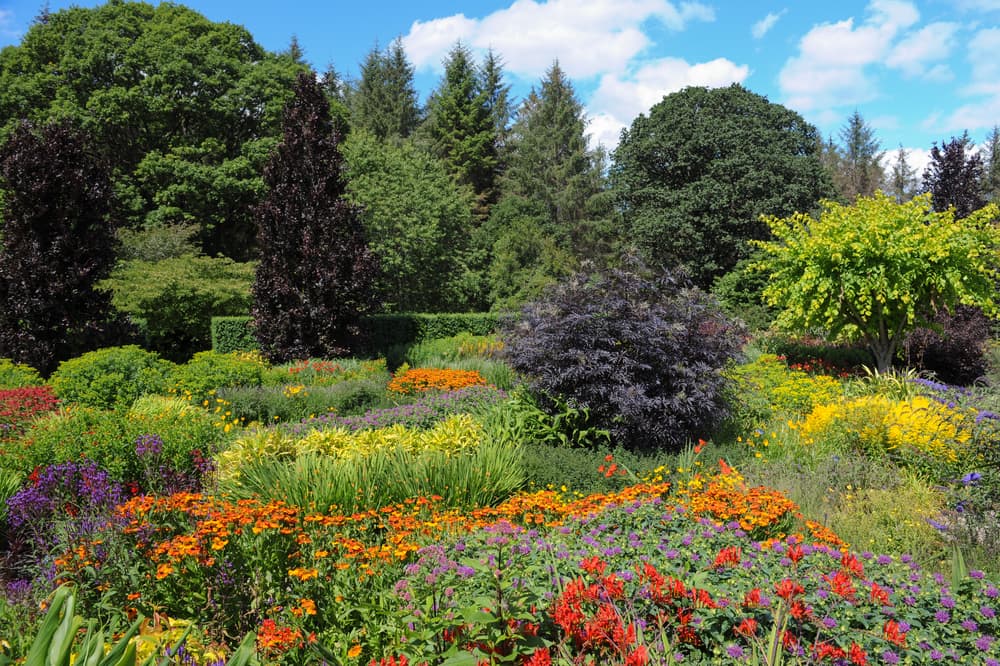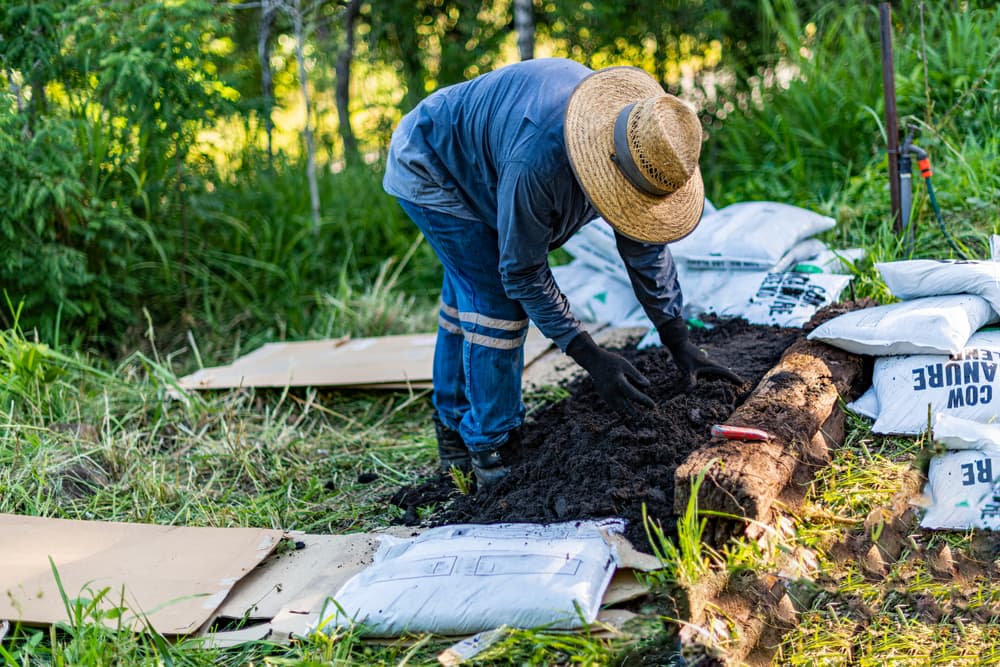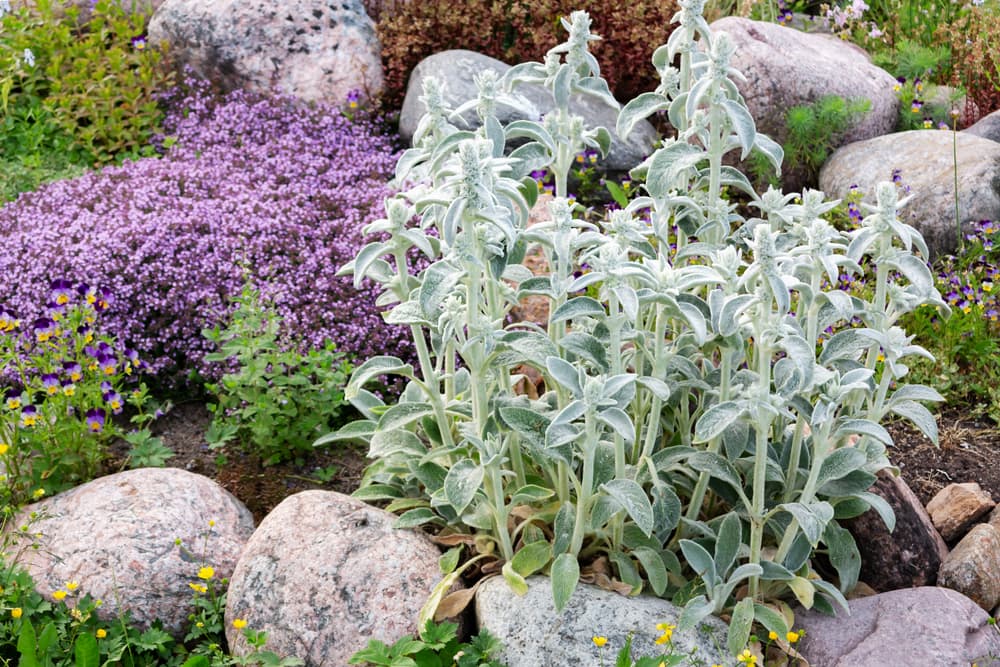Create Your Own Herbaceous Border – Use Perennials For ‘A Succession Of Flowering’


Elizabeth is a Permaculture Garden Designer, Sustainability Consultant and Professional Writer, working as an advocate for positive change. She graduated from the University of St. Andrews with an MA in English and Philosophy and obtained a Diploma in Applied Permaculture Design from the Permaculture Association.
Reviewed By COLIN SKELLY

Colin is a Horticulturist and Horticultural Consultant with experience in a range of practical and managerial roles across heritage, commercial and public horticulture. He holds the Royal Horticultural Society’s Master of Horticulture award and has a particular interest in horticultural ecology and naturalistic planting for habitat and climate resilience.
Contributions From JULIET SARGEANT

Juliet is an award-winning Garden Designer who won a Gold Medal at the Chelsea Flower Show in 2016, as well as being voted the winner of the People’s Choice Award. She also is the founder of the Sussex Garden School and an RHS show garden judge. Juliet has a BA (Hons) in Garden Design from Middlesex University and is a Registered Fellow of the Society of Garden Designers.

What started as a blog turned into a huge project and an online shop for sisters Elaine, Caroline and Laura, who make up The 3 Growbags. They frequently document their journey and have made appearances at several RHS shows. All three are full members of the Garden Media Guild.

Jinny Blom is an award-winning Landscape Architect and the owner of Jinny Blom Design Studio. She is also the author of ‘The Thoughtful Gardener’, with her second book, ‘What Makes A Garden’ coming out later this year.

Andy McIndoe has over 40 years of experience working in commercial Horticulture. He received a BSc Hons in Horticulture from the University of Bath in 1978. He is now a garden writer and contributor to radio, magazines and various online courses. Andy received the Veitch Memorial Medal from the RHS in 2017, while his exhibits were awarded 25 consecutive Gold Medals at the RHS Chelsea Flower Show.
IN THIS GUIDE
- What Is A Herbaceous Border?
- Marking Out & Preparation
- 1) Don’t Restrict Yourself To The Very Edges Of The Garden
- 2) Use Natural Materials For Edging
- 3) Consider No Dig Methods
- 4) Place Your Plants By Height
- 5) Plant In Ribbons
- Choosing Plants For A Herbaceous Border
- Best Flowering Perennials For A Herbaceous Border
- Planting Your Perennial Border
- References
Creating a stunning herbaceous border can be great for the wildlife in your garden, and great for you.
Herbaceous borders are great for gardeners who want to create a beautiful and long-lasting garden design.
These planting schemes are great for biodiversity – and for attracting plenty of beneficial creatures to share your space.
“There are a huge number of perennials available to gardeners in the UK climate, from early spring to early winter,” shares Master Horticulturist Colin Skelly.
“When planned to provide a succession of flowering and combined with bulbs, shrubs and trees, they can provide a huge amount of floral resources for pollinators and food and habitat for other garden life.”
They can also be quite quick to establish, meaning that you might not have to wait as long to get a lush and established look in your garden.
If you would like to learn how to create a stunning herbaceous border where you live, then read on for some tips and suggestions.
What Is A Herbaceous Border?

A herbaceous border is a garden growing area that features a range of herbaceous perennials (plants that live in your garden over a number of years, but which die back each winter).
The concept of herbaceous borders evolved here in the UK during the 19th Century.1The curious history of herbaceous borders. (1997, June 26). The Economist. Retrieved March 17, 2023, from https://www.economist.com/moreover/1997/06/26/the-curious-history-of-herbaceous-borders
The term is usually used synonymously with the ‘herb perennial border’, which is the more popular name for this type of planting in the US and elsewhere.
Marking Out & Preparation
“If you’ve not done it before, start with planning,” shares Jinny Blom, a Garden Designer.
“Map out the seasons first, then I’d go for colour. You need to give yourself some simple rules.
“I’d also recommend flicking through some books that show plants in their native habitat, which means that you can quickly understand how big they are and what they do.”
1) Don’t Restrict Yourself To The Very Edges Of The Garden

“Firstly, make borders wide enough,” shares award-winning Horticulturist Andy McIndoe.
“1m wide is an absolute minimum, 2m is much better and 3m wide is ideal. This always seems excessive until plants start to grow.
“You may think bigger borders mean more gardening work, but in fact, it’s quite the opposite. Give the plants the space and you will not spend your time cutting them back to keep them in the space.”
Consider bringing the plants out of the edges, curving borders out into the centre of the space, or using herbaceous borders as divisions between garden rooms.
Use curving and sinuous forms for a more naturalistic look.
2) Use Natural Materials For Edging

If creating bed edging for your new border, consider natural or reclaimed materials.
Or – consider simply edging the border with living ground cover plants.
Mark out the edge of your new border with flour, string and stakes, or with a garden hose to create the edge of a more sinuous shape.
“Try and keep the edges of your border neat,” says Laura from The 3 Growbags.
“It’s ridiculous what folk will forgive if the border edges are sharp and look well-cared for.”
3) Consider No Dig Methods

Consider using no dig methods – when creating a border on lawn, cover the grass with cardboard then layer up mulches before topping with a layer of well-rotted compost/ manure.
You will dig planting holes to accommodate each plant but most of the soil will remain undisturbed.
You can then add an organic mulch around your plants once you have placed them, and replenish this in spring each year.
If you are already working with bare soil, make sure this is weed-free, then top dress with plenty of compost and/or other organic material.
4) Place Your Plants By Height

For a very formal and regimented design, place taller perennials at the back of the border, mid-height plants at the centre, and low-growing or ground cover plants at the front.
However, you can also mix things up a little and place wispy, tall plants close to the front of the border, so you look through these to the plants behind.
Placing taller plants towards the front of the border can help break up the lower, mounded forms and make it look for organic, free-flowing and natural.
“I think what often gets forgotten is playing around with height to create a three-dimensional space,” shares Garden Designer Juliet Sargeant.
“There’s often a little strip of bare earth left at the front of a border, so pay attention to the front and make sure you put a few low-growing plants that spill over into the front of the path there.
“Place tall plants at the back to make people’s eyes sweep up over the whole border.
“It’s also really nice to break that up with translucent plants that have some ethereal movement to them so that you look through them.
“Think about where people will actually be looking; plant to encourage people to look actively at the planting.”
5) Plant In Ribbons

Plant in ribbons, or drifts of plants, and avoid placing too many individual flower types, which can make the overall border look a bit messy and overly fussy.
Be sure to mix textures and forms to create a look which leads the eye and flows in a natural way.
Avoid creating straight lines and solid blocks of colour on foliage, as these can be jarring and spoil the overall effect.
“Nothing will ever be perfect in a garden and nor should it be,” says Laura.
“It’s the striving for perfection that feeds the soul.”
Choosing Plants For A Herbaceous Border
- Think about the environmental conditions. Be sure to choose plants suited to the climate and microclimate where you live. Think about whether the border is sunny or shaded, sheltered or exposed, and choose plants accordingly.
- Choose a selection of plants which provide blooms and visual appeal over as much of the year as possible. Try to make sure that each time one plant in the border finishes blooming, there are at least a couple more ready to take over.
- Consider native perennials, which can be particularly well suited to local growing conditions, and which can be particularly beneficial for local wildlife.
- Don’t overlook the potential of edible perennials, perennial herbs and other useful perennial plants as well as flowering ornamentals. A herbaceous border can be useful as well as beautiful.
- Remember that you can always ‘break the rules’ a little, and keep your border looking fantastic all year round by including grasses for autumn/ winter interest – and perhaps also some flowering shrubs towards the back of your perennial border.
- Consider whether the plants you are selecting will fit in with the overall look and feel of your garden. Will they be suited to the style of garden (contemporary, rustic, natural, wildlife-friendly etc.) that you want to create?
- Consider whether you will have a colour scheme for your garden. While there are no rules, and if you want a cacophony of colour you can certainly have one, it can often be best to choose a few hues and create a scheme centred around those colours. For example, you might create a silver and blue border, a green and white border, or a border with reds, purples and pinks or a sunny border with yellows and oranges, for example.
“For the planting, think foliage first and flows second,” says Andy.
“You need enough structure and you must plant for continuity.
“This can be the problem with taking inspiration from show gardens. Remember that they are only there for a week, whilst your garden will be staring back at you year after year!”
Best Flowering Perennials For A Herbaceous Border

To give an example of how to create a stunning herbaceous border, let’s take a look at some suggestions for a sunny herbaceous border, with year-round flowers in shades of purple, purplish pinks and blue.
Here are some beautiful options to consider:
Agastache

Asters

Bergenia cordifolia

Campanula

Centaurea montana

Ceratostigma plumbaginoides

Chives / Alliums

Comfrey

Delphiniums

Echinops ritro

Eryngium

Geraniums

Heuchera

Hosta

Limonium platyphylum

Lupins

Penstemon

Perennial Brassicas

Salvias

Scabiosa

Sedums

Stachys byzantina

Verbena bonariensis

Veronica

Violas

Many of the options listed above will also work well alongside certain ornamental grasses, or alongside small shrubby plants like – most obviously, lavender, thymes and other perennial herbs, and perhaps some heathers too.

Fortunately, there are choices of plants in many different shades that will work very well in many UK gardens.
The plants listed above are just a few examples for one particular scheme.
Learning more about different plants that will grow well where you live, and the details of their blooming and care, will help you make the right choices for your own specific border.
Make the right plant choices and your herbaceous perennial border can be in bloom from May or even earlier right through to September and beyond.
Planting Your Perennial Border

Once you have chosen which plants to include in your border, and once the border preparation has been done, it is a good idea to lay out the plants in their pots into the growing area, so you can play around with them and decide what to place where before you actually commit.
March and September are the ideal times for planting out perennials.
But you can plant them out at any time throughout the year, as long as the ground is not frozen, or waterlogged.
It is also best to avoid times of extreme heat and dry conditions, as this can also make it more difficult for plants to become established successfully.
See The Bigger Picture
Once you have placed all your plants in their pots, be sure to stand back a little so you can take in the overall effect.
It can be difficult to see the bigger picture when focussing closely on a few grouped plants.
If you’re certain that you are happy with the overall look and balance of the border, then you can begin to plant all your plants.
Bury each one to the same depth that it was in its pot.
Then water your plants in well, and lay your organic mulch around your plants, making sure that you do not pile it up around the stems or crowns, as this can cause them to rot.
Make sure that you continue to water well and regularly until the planting has become more established.
References
- 1The curious history of herbaceous borders. (1997, June 26). The Economist. Retrieved March 17, 2023, from https://www.economist.com/moreover/1997/06/26/the-curious-history-of-herbaceous-borders
